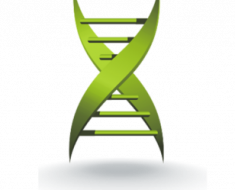What are IRF6-Related Disorders?
Cause and symptoms
IRF6-Gene
Epidemiology
Case report
Diagnosis and treatment
References
Further reading
IRF6 (Interferon regulatory factor-6)-related disorders are a group of orofacial clefting conditions, including Van der Woude syndrome (VWS) and popliteal pterygium syndrome (PPS).
VWS and PPS patients frequently have cleft lip, cleft palate, and/or lip pits. The symptoms of IRF6-related disorders vary widely between individuals. Some people may have minimal clinical indications, while others may have a more extreme version of the condition.
 Image Credit: PeopleImages.com – Yuri A/Shutterstock.com
Image Credit: PeopleImages.com – Yuri A/Shutterstock.com
Cause and symptoms
IRF6 syndrome has been linked to mutations in the interferon-6 regulatory factor (IRF6) gene, found on the long arm of chromosome 1 at 1q32.2. IRF6-related diseases are inherited in the autosomal dominant pattern.
Most people with an IRF6-related clefting disorder (for example, VWS or PPS) inherited an IRF6 pathogenic variation from a heterozygous parent who may or may not have the disorder.
Van der Wood Syndrome (VWS) and Popliteal Pterygium Syndrome (PPS) are two cleft lip and palate syndromes associated with IRF6 (PPS). VWS patients are at the bottom of the continuum.
They may have a cleft lip, palate, submucous cleft palate (SMCP), or a combination of these defects. Congenital paramedian lower-lip fistulae (pits) or tiny mounds with a sinus tract leading from a mucous lip gland are also common.
Popliteal pterygium syndrome (PPS) is the most severe form of IRF6. PPS patients typically have cleft lip or cleft palate, as well as skin and limb deformities.
These include dark skin on the back of both feet (papillary) and between the legs (between the veins) and device deformity or anomalies.
Common features include Fistulae of the lower lip, syndactyly of fingers and/or toes, and webbing of the skin extending from the ischial tuberosities to the heels.
Bifid scrotum and cryptorchidism are observed in males. Females can experience hypoplasia of the labia majora. Anomalies of the skin around the nails and characteristic pyramidal fold of skin overlying the nail of the hallux are also observed.
One confirmed finding in PPS is a conical crease of the skin on the thumbnail.
IRF6-Gene
IRF6 encodes a transcription factor from the IRF family. The IRF gene family influences immune system development and function. Throughout epidermal development, IRF6 protein expression is important.
IRF6 protein is produced in periderm and basal cells early in cutaneous development.
The IRF6 gene codes for a protein that is critical in early development. This protein is a transcription factor, which means it binds to certain areas of DNA and regulates the activity of specific genes.
The IRF6 protein is active in cells that give rise to head and face tissues. It is also important in developing other bodily components, including the skin and genitals.
Epidemiology
The most common cause of a single cleft lip and palate gene is VWS. This condition is predicted to affect one in 35,000 to one in 100,000 people in Europe and Asia. PPS affects about one in every 300,000 people.
Case report
Schierz et al. described a clinical case of a female infant with oromaxillofacial abnormalities and extraoral deformities.
On the first day of life, a 3.970 kg first-born female infant was referred to our neonatal intensive care unit with hypoglycemia and congenital syngnathia, rendering oral feeding impossible.
Her young parents were not related. Apgar values were eight and ten at one and five minutes, respectively. When examined, the newborn had macrosomy, an overfolded superior helix ear deformity, narrow lips, slight retrognathia, and a large nasal bridge.
There were also numerous fibrous bands between the mandibular and maxillary gingival arches and tongue-palate fusion. There were no anomalies with the lips.
The deformities were linked to molecular genetic studies, which revealed an interferon regulatory factor 6 (IRF6)-related disease. A unique de novo heterozygous mutation, c.262A > G (p.Asn88Asp), was discovered in exon 4 of the IRF6 gene on chromosome 1q32.2.
Similarities with known asparagine missense mutations in the same codon are discussed, which may impact IRF6 gene activity by reducing DNA-binding capacity. Possible epigenetic changes could be aided by a concurrent maternal Xp11.22 duplication affecting two microRNA genes.
The described instance with a unique mutation can help to enhance understanding of the molecular mechanisms driving synechiae and orofacial clefting and correct the diagnosis of IRF6-related illnesses with incomplete or overlapping symptoms.
Comprehensive otolaryngologic, audiology, dental, and psychological assessments, among others, should be included in additional multidisciplinary evaluations.
Diagnosis and treatment
A proband with suggestive evidence and a heterozygous pathogenic mutation in IRF6 discovered by molecular genetic testing form the basis for diagnosing IRF6-related disorder.
Once an IRF6 pathogenic variation has been detected in a family member, prenatal testing for high-risk pregnancy and preimplantation genetic testing are options.
A prenatal ultrasound scan may reveal a cleft lip with/without a cleft palate in some fetuses later in the second trimester; however, an isolated cleft palate or lip pits are far less likely to be seen.
Supportive/symptomatic treatment for VWS and PPS may involve lip pit surgery and cleft lip and palate repair.
A treatment strategy should include speech therapy, nutrition therapy, physical therapy, and orthopedic care.
Those who have oral and/or eyelid synechiae may require surgical therapy. Neurosurgeons treat IRF6-related neural tube defects like other types of neural tube defects.
References
- Schierz, I., Amoroso, S., Antona, V., Giuffrè, M., Piro, E., Serra, G., & Corsello, G. (2022). Novel de novo missense mutation in the interferon regulatory factor 6 gene in an Italian infant with IRF6-related disorder. Italian journal of pediatrics, 48(1), 132. https://doi.org/10.1186/s13052-022-01330-6
- Asadi, S. (2022). The Role of Mutations on Gene IRF6 in IRF6 Related Syndrome. Clin Onco, 6(4), 1-6.
- Schutte BC, Saal HM, Goudy S, et al. IRF6-Related Disorders. 2003 Oct 30 [Updated 2021 Mar 4]. In: Adam MP, Mirzaa GM, Pagon RA, et al., editors. GeneReviews® [Internet]. Seattle (WA): University of Washington, Seattle; 1993-2022. Available from: https://www.ncbi.nlm.nih.gov/books/NBK1407/
- Kousa, Y. A., Fuller, E., & Schutte, B. C. (2018). IRF6 and AP2A Interaction Regulates Epidermal Development. The Journal of investigative dermatology, 138(12), 2578–2588. https://doi.org/10.1016/j.jid.2018.05.030
- IRF6 gene. [Online] Medline Plus. Available at: https://medlineplus.gov/genetics/gene/irf6/
- INTERFERON REGULATORY FACTOR 6; IRF6. [Online] OMIM. Available at: https://omim.org/entry/607199
Further reading
- What are Beta Interferons?
- Multiple sclerosis and beta interferon
- Chronic Myeloid Leukemia Treatment
Last Updated: Sep 11, 2023





